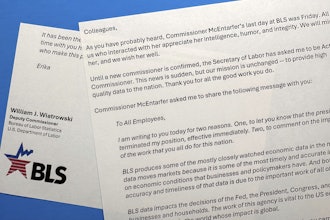The shortage of a skilled manufacturing workforce is not news to those of us in these industries and as the second wave of the Baby Boomer generation moves into retirement this rising tide will only worsen. As such, it’s essential for the manufacturing industry to find ways to attract—and retain—young workers.
Let’s face it—there exists a misconception that a job in manufacturing equates to repetitive, assembly-line work. Most young people entering the workforce probably don’t realize the technical, artistic, creative and problem-solving skills necessary for a career in manufacturing, whether in creating smaller items like labels and graphic overlays or bigger things like automobile and aircraft parts. That’s why training and education are key to attracting new workforce members.
It is an area that NFI Corp. has designated as a priority as we look to attain the next generation of engaged, committed and talented employees. In fact, we’ve introduced a program specifically geared toward high school graduates looking for an opportunity to find a well-rounded career.
Our “Corridor to College” program is focused on the future, allowing high school graduates to choose from among three corridors: Engineering/Design, Production Management and Business Management.
These potential career modules allow fledgling workers the chance to get a feel for a variety of employment avenues in the manufacturing industry of today. We look at this program as a valuable opportunity for students to experience a range of functions within NFI so when the time comes to choose a career path, they have the information needed to select a “corridor” that best matches their skill set and interests.
A growing number of high schools have integrated STEAM (Science, Technology, Engineering, Art and Math) programs into their curriculum, and this is a promising trend. These fields of study are companion to today’s manufacturing jobs since all five prongs of a STEAM program are dovetail to a career in manufacturing. Not only do manufacturing businesses need skilled production workers, we also require innovative engineers, design artists and marketing professionals.
Over the course of a mere few years, digital systems, robotics and other technologies have become standard in the manufacturing industry. So, the message we should be delivering to young people beginning their careers and educational path is that there is more going on behind the scenes in manufacturing companies than they realize. We need to make them aware of marketing and sales opportunities and how the latest business-to-business strategies and use of technology attracts new customers. We should also encourage our next generation of workers to visit our facilities and view how designers and engineers create innovative projects and how manufacturing production staff sees those concepts to fruition.
And there is much innovation happening in the world of manufacturing these days. Automation and robotics are being integrated with more “old school” practices to encourage a younger workforce whose lives have been significantly influenced and shaped by technology. From IT managers to process specialists, operations directors to mechanical engineers, the opportunities for high level/salaried posts in our industries are many. That said, we should not diminish the importance of our hourly workers for they are the backbone of our industry. Great skill and precision is required to operate automated machinery.
Despite the technological advances that are now commonplace and the many prospects for occupational advancement, the shortage of candidates looking for a career in manufacturing undeniably still exists. That false perception that a career in manufacturing is a throwback to days gone by is the main sticking point. Those of us in the industry need to make a concerted effort to reverse that misconception, starting with a healthy company culture.
Company culture in today’s competitive marketplace should play a starring role during the recruiting process. It’s critical for a manufacturing company’s website to include comprehensive information about specific job openings; it should also include material that defines the company’s sense of culture and values. And let’s not devalue the need for thorough job descriptions for they provide an opportunity to not only communicate the job’s parameters and required skills to perform, but can also shine a light on the benefits of working with your company. Those advantages might include potential for advancement, the chance to work with high-technology equipment, being part of a team that is on the cutting-edge of a product line—the idea is to create an awareness and excitement about the promise and stability of a career in manufacturing.
Overcoming the challenges created by the current skills gap in manufacturing will take some time. Those of us in the industry must embrace multiple strategies to return a career in manufacturing to its rightful place of honor. Inventive talent sourcing and recruiting approaches, modernized branding methods and vibrant company cultures that speak to a new workforce generation are essential to altering the outdated image of manufacturing. But, perhaps, most importantly, our industries must become involved in educating high school and college students about the many benefits of a career in manufacturing, to continue to move our industry forward.
Marcia LaBelle is Vice President, Human Resources, Systems & Services for NFI Corp. – Nameplates for Industry.























